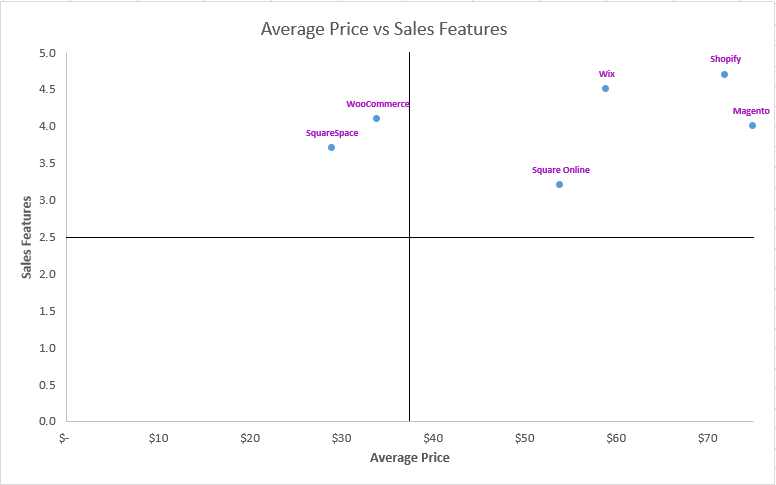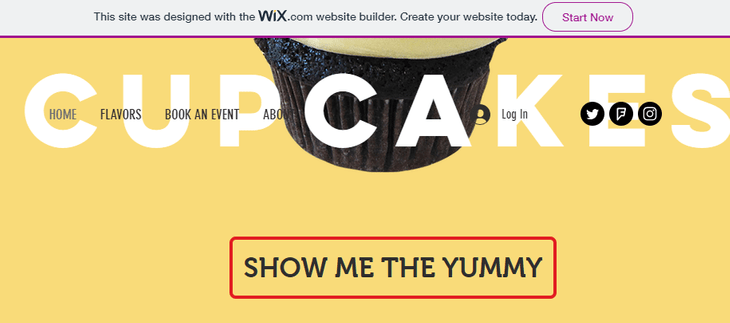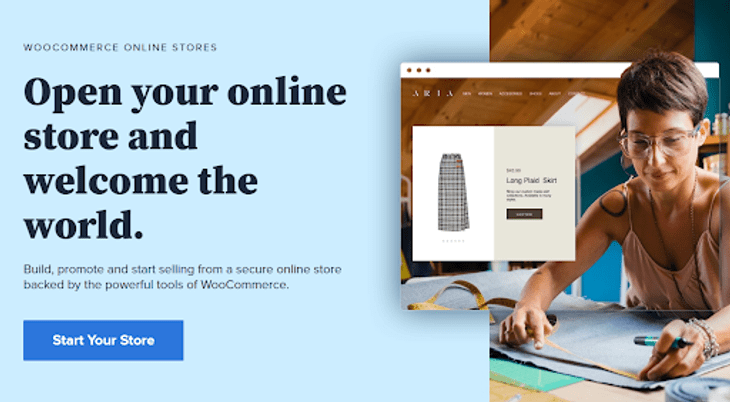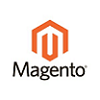6 Best Free Ecommerce Platforms 2024 | Save and Sell Today
Our independent research projects and impartial reviews are funded in part by affiliate commissions, at no extra cost to our readers. Learn more
Are you able to sell online for free in 2024? The answer may surprise you!
If you are stuck wanting to build an online store but think you don’t have the money to afford an ecommece platform, then this article is the one for you. We’ve researched and collected the 6 best free ecommerce platforms for you to show that you don’t always have to spend money to make money!
But who are these platforms? Which are the best? And what features should you be looking for if you’re a beginner? All will be revealed below…so let’s not waste any more time!
The 6 Best Free Ecommerce Website Builders
- Square Online – (free plan) – Best for food businesses selling online and offline
- Shopify – (free trial) – Best for selling manufactured products online
- Wix – (free to build, not sell) – Best for selling hand-crafted products online
- Squarespace – (free trial) – Best for photographers selling photos online
- WooCommerce – (free to install) – Best for international sellers
- Magento – (free to install) – Best for businesses making +$250K per year
Our mission is to provide our readers with honest and transparent information because our primary aim is to find the perfect ecommerce platform for your needs! You can read more about our testing methodology below.
Compare the Best Free Ecommerce Website Builders
| SELL ON FREE PLAN | BEST IN TEST | ||||
| Square Online | Shopify | Wix | Squarespace | WooCommerce | Magento |
| Overall rating 4.2 | Overall rating 4.8 | Overall rating 4.8 | Overall rating 4.4 | Overall rating 4.2 | Overall rating 4.0 |
| Starting Price $29 | Starting Price $29 | Starting Price | Starting Price | Starting Price Depends on web host | Starting Price $59.99 |
| Transaction Fees 2.9% + $0.30 | Transaction Fees 2.9% + $0.30 | Transaction Fees 2.9% plus $0.30 | Transaction Fees 0% – 3% | Transaction Fees 2.9% + $0.30 (+1% for non-US customers) | Transaction Fees 2.9% +$0.30 |
| Free plan or free trial Free plan | Free plan or free trial | Free plan or free trial Free plan | Free plan or free trial 14-day free trial | Free plan or free trial Free to install | Free plan or free trial Free to install |
| Sales features 3.6 | Sales features 4.7 | Sales features 4.5 | Sales features 3.7 | Sales features 4.1 | Sales features 4.0 |
| Number of products on cheapest plan Unlimited | Number of products on cheapest plan Unlimited | Number of products on cheapest plan Unlimited | Number of products on cheapest plan Unlimited | Number of products on cheapest plan Unlimited | Number of products on cheapest plan Unlimited |
| Value for Money 4.2 | Value for Money 3.6 | Value for Money 4.4 | Value for Money 3.8 | Value for Money 4.1 | Value for Money 3.5 |
| Visit Square | Visit Shopify | Visit Wix | View Squarespace | View WooCommerce | Visit Magento |
You’ve Got Three Options
We’ll keep this short and sweet: there are three different ways to start an online store for free. This list is organized by the amount of sales features vs the average price. Take a look at the quadrant graph to see where each provider falls:

Option 1: The best free ecommerce platforms
These builders let you sell with absolutely no costs, but will come with strict limits and/or charge commission fees. From our own experience, we’d only really recommend these for people selling “on the side” because you miss out on a lot of important sales features. The best builder in this category is Square Online.
Option 2: The best ecommerce platforms with free trials
These builders offer powerful paid plans that you can try out for free. Free trials usually last for about two weeks, so you have enough time to test a plan on these platforms before you decide if it’s worth paying for. Our recommended free trial builder is Shopify.
Option 3: The best free ecommerce software
Software tools are different from website builders because they’re powerful and complex platforms that are free to install, but do require additional costs to get up and running. Our number one best free ecommerce software is WooCommerce.
#1. Square Online
Best for food businesses selling online and offline
Not ideal for creative freedom
Square Online
Best for food-related online stores
- Quick setup
- Easy to use
- Not very scalable
Free plan available
Paid Plans: $12 - $79 / month
Pros
-
Easy to track sales and abandoned carts
-
Responsive help and support
-
Seamless payments system
Cons
-
Limited design freedom
-
Few payment processing options
-
Not great for large volume selling
Overview of Square Online
From our experience, Square Online is the best ecommerce platform for letting you sell for free, with an overall score of 4 out of 5. For those starting their first online business or who want a fresh start, the luxury of not having to pay to sell is a huge advantage because you can utilize the money to cover something else.
As Square Online is the only truly free ecommerce platform on this list, it places above Shopify and Wix, which are both stronger platforms overall. A real area it lacked was design flexibility, where it only earned a 2.6 out of 5. You can’t edit nearly as many elements on your site as you can with Wix or Shopify, leaving your store quite lackluster.
Square Online Sales Features
What’s fantastic about Square Online is you can start selling right away for free! Where it also succeeds is its range of POS systems, allowing you to take your products offline while still linked to your store. This makes Square Online the number one choice of food businesses, as they can bring a POS system and sell their food in person where customers can actually smell and taste the food.
Versus Shopify, Square Online’s sales features score is only 3.6 out of 5 compared with Shopify’s 4.7 out of 5, which highlights the point that you really do get what you pay for. Although you can accept payments through Square Online’s in-house payment processing system (as well as Google and Apple Pay), customers won’t be able to use PayPal. Additionally, users won’t be able to leave product reviews, there’s no abandoned cart recovery, and your site analytics will be basic, to say the least.
Square Online Free Plan Limitations
Some downsides to the free plan are there’s no PayPal payment option, no product reviews, and there’s no abandoned cart recovery. On the actual website-building side, you can’t implement professional branding, advanced site layouts, or connect a custom domain. You’ll need to upgrade to the Plus plan to access these features, with prices starting at $29 per month (billed annually).
There are also the commission fees, with free plan users still being expected to pay 2.9% + $0.30 on each card payment, meaning that even though the plan is advertised as free, there’s always some cost.
This was due to the fact Square Online only offers two layout choices: Shop All and Order Online. The Shop All layout is for ecommerce retail brands that want to set up an online store to sell their products, whereas the Order Online layout is geared towards restaurants and food businesses. We mentioned earlier that Square Online has put a lot of time and effort into its POS system and business packages for restaurants, which makes sense for them in the long run as a company. However, this has led to its design functionalities being less developed, hence the drop in score.
Square Online’s Plus plan used to cost $12 per month back in 2022. However, a changing marketplace and outside factors have caused all ecommerce website builders to raise prices, including Square Online’s cheapest paid plan which now costs $29 per month – an increase of 142%.
Square Online Gallery
Square Online in Action: Key West Cocktail Company
Q&A
Why did you choose Square Online for your website?
What do you like about Square Online?
Did you face any obstacles when building?
How long have you been using Square Online?
Would you recommend it to others?
What do you wish you had known before you started?
#2. Shopify
Best for selling manufactured products online
Less ideal for hand-crafted products or hobbyists
Shopify
Best for fast-growing stores
- Built for large stores
- Great inventory tools
- Recommended by real users
Free trial available
Paid Plans: $29 - $299 / month
Pros
-
Sell across many social media channels
-
Abandoned cart recovery on all plans
-
Easily track stock levels and orders
Cons
-
Some features come separately as apps
-
Transaction fees for most payment tools
-
Switching themes is a hassle
Overview of Shopify
Shopify is a builder with powerful features and a wide range of themes, perfect for small online businesses and those seeking to create an ecommerce empire. It’s why we chose it as our best overall ecommerce website builder, tied with Wix at 4.8 out of 5.
We recommend it for selling manufactured products. Thanks to its over 8,000 apps and integrations, setting up an online store with a supplier and shipping is easier than ever. For the same reasons, we don’t recommend Shopify’s alternatives for smaller stores or those with hand-crafted products: it is simply overkill, and it’s more expensive than average plans making it not worth the cost.
Shopify Sales Features
Shopify scores a solid 4.7 out of 5 for sales features, which is the highest score in our research for this category. Many of its sales features are tied to third-party apps that users also had to pay subscriptions for. However, Shopify has made many of these features internal, like selling digital products.
Users will still have to rely on apps and plugins, such as payment processors which incur transaction fees on each sale. Even Shopify’s in-house payment processor, Shopify Payments, has transaction fees:
- Online payment processing fees: 2.9% + 30¢ per transaction
- In-person payment processing fees: 2.7% + 0¢ per transaction
Shopify Free Plan Limitations
While you can’t sell for free on Shopify, it does have a 3-day free trial, and new customers qualify for a $1 per month deal for the first three months. This is a great option for those starting an online business.
The limitations include a Shopify-branded free URL and the inability to sell your items until you commit to a payment plan. This essentially means you can create your store for free but you can’t actually sell until you spend.
“It’s definitely suited for those with more experience with web design, but this makes it fun to use as you can feel the potential for customization.”
Still, it’s not the easiest builder out there. Users were a little confused by the editor, and some disliked how you had to navigate back to the dashboard to add products separately. However, given the powerful tools it has to offer, we think this is a reasonable trade-off for its ecommerce capabilities.
Each of Shopify’s store examples comes in multiple styles, so you still get a decent range to choose from. The main difference between a theme’s styles is the color scheme. For example, the Pursuit theme comes in three styles: Vail (blue), Aspen (orange), and Telluride (pink). Pick wisely though, as it can be a huge hassle to switch themes once you’ve picked.
If you want to use Shopify but don’t think you can afford the $29 per month after the trial period, the Shopify Starter plan only costs $5 per month, giving you access to Shopify’s great inventory and sales features, but you won’t have a full online store. Instead, it will be connected to a social media account.
Shopify Gallery
Shopify in Action: Lucky Dog Design Co
Q&A
Is there anything you'd change about it?
What do you like most about Shopify?
How long have you been using Shopify?
Would you recommend Shopify to others?
What do you wish you’d known before you started?
#3. Wix
Best for selling hand-crafted products online
Less ideal for high-demand products and very large online stores
Wix
Best for smaller stores
- Plenty of design freedom
- Powerful features
- Easy to use
Free trial available
Paid Plans: $16 - $159 / month
Pros
-
Can sell Wix products on Instagram
-
Product videos add credibility
-
Mobile editor for on-the-go changes
Cons
-
No automated low stock alerts
-
Not the best for very large stores
-
Can’t change templates once site is live
Overview of Wix
Wix is joint first with Shopify in our research for ecommerce platforms and is our best-rated website builder overall. In our experience, Wix is the only website builder to offer a comprehensive package. It has just about every feature you could ask for without the need for third-party apps and is constantly adding new implementations.
However, we don’t actually recommend it for larger, enterprise stores. It can’t handle large volumes of products like Shopify or Magento can – it’s just not specialized enough. It doesn’t even have automated low-stock alerts. Wix is better suited for smaller stores or those with handcrafted products. These users will find Wix goes above and beyond for them, while still being easy to use.
Wix Sales Features
With the cheapest Wix plan, you can sell an unlimited number of products as well as on socials like Facebook, Instagram, and more. You will get over 800 templates to choose from, a huge media library of images, and discounted shipping rates.
Wix’s sales features versus Shopify’s may not be as strong, but they are not far off, scoring a solid 4.6 out of 5 in our overall ecommerce ranking. What Wix delivers as an ecommerce platform is personalization. From our experience, other ecommerce builders box you in for the sake of convenience, like Square Online and Shopify’s lack of customization in the editors. If you’re looking to add a personal touch to your store, Wix is the builder for you. There is very little that you won’t have a say in when building your online store with Wix, and its ease of use makes changing things simple.
Wix Free Plan Limitations
You can have a free plan with Wix, but you’ll have a Wix ad banner and branded URL on your website that could clutter your design. The biggest limitation – like with Shopify – is needing to upgrade your plan to accept payments.
Wix does offer a 14-day free trial of any premium plan, meaning you can test out these features, but you’ll be automatically put on the free plan afterwards.
In fact, there’s so much design freedom that you might feel overwhelmed at first, but you’ll get the hang of Wix’s template editor in no time. Wix also has ADI that will, after a few questions, build a site for you and fill it with text and images.
Like with Shopify though, you have to choose carefully, as once your site is live there’s no changing template.
- Design a site on Wix’s free plan, then upgrade to a paid plan to start selling
- Sign up for a paid ecommerce plan, and get all of your money back if you cancel in the first 14 days
If you finish the 14-day trial period and like what you’ve seen, then you can stay on Wix’s cheapest ecommerce plan for $27 per month.
Wix Gallery
Wix in Action: WasteX
Q&A
Why did you choose Wix?
How long have you been using Wix?
What is your favorite feature when using Wix?
Would you change anything about Wix?
Would you recommend Wix to others?
#4. Squarespace
Best for photographers selling photos online
Less ideal for selling industrial and electronic components online
Squarespace
Best for selling art
- Great management features
- Best designs
- Great built-in tools
Free trial available
Paid Plans: $16 - $49 / month
Pros
-
Powerful features included with plans
-
The easiest ecommerce builder to use
-
Insightful analytics tools
Cons
-
Not many ecommerce-specific templates
-
Fewer payment methods
-
Editor doesn’t autosave your changes
Overview of Squarespace
Squarespace isn’t as powerful as Shopify but, as a website builder, it has always offered the most stylish templates on the market, making it perfect for photographers selling photos online. Much like Wix, Squarespace aims to appease both ecommerce and non-ecommerce users, which means its ecommerce store templates are not as finely tuned as Shopify’s, for instance.
What Squarespace does get top marks for is ease of use. If you are worried about editing and building your website, then Squarespace is the platform for you. It scored 4.3 out of 5 for ease of use overall, reaching the number one spot in our research. If you couldn’t give less of a hoot about design, and just need a website to sell industrial or electronic components, you’d be better off with Shopify’s sales features versus Squarespace’s editing tools.
Squarespace Sales Features
Squarespace’s 14-day free trial gives you unlimited products to sell. A real selling point is the new ways Squarespace lets you showcase your products, from videos to selling on other channels and creating social media campaigns with Squarespace Unfold. You can create video templates for Instagram and TikTok and promote your products with trend-setting video content.
A disappointment we faced was a lack of payment options, only having PayPal, Stripe, and Square available. This ties into other reservations users had about Squarespace being unstable for larger ecommerce stores. Like Wix, you’ll get more out of this platform if you keep it on the smaller size.
Squarespace Free Plan Limitations
Like Wix, you will need to upgrade plans to accept payments for your store with Squarespace. You will have a randomized Squarespace domain, and you won’t have capabilities like cart abandonment recovery. For new online business owners, Squarespace’s pricing can be frustrating, especially if you are on a budget, but you do have 14 days of a free trial to decide if you want to upgrade or not.
“It was smooth as butter. Everything was where I wanted it to be.”
However, one gripe that has made its way to today is the lack of autosave when editing. Keep track of all your changes because if you don’t manually save you could lose it all!
While Squarespace’s online store templates certainly look stylish, you won’t get quite as much design flexibility for online stores as you would with Wix or Shopify. From our hands-on experience with the platform, the omnichannel design has taken a dip since our previous scores. While the templates are still top-notch, we’d like to see Squarespace focus more on its ecommerce design to ensure it can keep up with its competitors.
However, if you want to pay a 0% transaction fee and get access to Squarespace’s merchandising tools, then the Basic Commerce plan for $4 more ($27 per month) is also available as an upgrade option. The choice depends on what is best for you, but from the point of view of an online store, we personally think the included tools are worth it.
Squarespace Gallery
Squarespace in Action: The A.M. Contemporary Furnishings
Q&A
How long have you been using Squarespace?
What do you like most about Squarespace?
When it comes to editing, I can save my favorite sections, which was a welcome change when it was implemented. The formatting of the sections was also recently updated to a scaled/modifiable tile format, making the scaling of pictures, buttons, and other items somewhat easier. Formatting text font as well as color schemes has always been somewhat simple with the styles’ formatting options. So, making large-scale changes is somewhat quick and painless once you get used to the tools available.
Is there anything you'd change about Squarespace?
I also think the shipping options are limited. My products sometimes require special arrangements because of their size and weight. Special freight requirements or unique cases for shipping would have been a nice feature.
Would you recommend Squarespace to others?
What do you wish you had known before starting?
#5. WooCommerce
Best for international sellers
Less ideal for beginners and smaller stores
WooCommerce
Best for large online businesses
- Very WordPress-compatible
- Extremely scalable
- Helpful setup wizard
Free plan available
Paid Plans: $12.95 / month
Pros
-
Huge variety of plugins
-
Lots of payment options
-
Tools for selling internationally
Cons
-
Have to install most features yourself
-
Cost of plugins and tools can add up
-
Only works with WordPress
Overview of WooCommerce
WooCommerce is a plugin for WordPress, and you can try it out for free for 14 days. However, you are going to need to find a hosting provider, a store theme, and subscriptions to whatever extensions you need. A benefit of this is that WooCommerce can be endlessly integrated and altered via code, which means its users can run bigger online stores than competitors who are tied to one particular platform, like Wix or Shopify. For example, WooCommerce has great access to international selling tools, like automatic currency calculators or multilingual options, opening it up to hundreds of different markets.
A downside to this is that you have to work through WordPress, whose mileage is dependent on how much you know about coding. For users with no experience with coding, we recommend you sign up with a builder like Wix or Squarespace before taking on WooCommerce.
WooCommerce Sales Features
Sales features that have become expected of ecommerce website builders need to be downloaded as an extension. WooCommerce doesn’t even have abandoned cart recovery built into the platform. The problem is that many of these features are not free. You may end up paying an average of $79-$299 per year for each one.
However, if you can get past this technical hurdle, you get rewarded with one of the best ecommerce platforms, perfect for high-stakes international commerce. In our research, we awarded its sales features an overall score of 4.1 out of 5, coming in third on this list for this category.
WooCommerce Free Plan Limitations
Not all features you can add with WooCommerce will be free, some will be paid. The average price you’ll be paying for a WooCommerce extension is around $79 per year, but that could go up to about $299 per year for the premium options. You’ll need a hosting provider with plenty of storage to add the features you need to make your store the best it can be. We recommend Bluehost because it’s the best overall hosting provider in our research and is even recommended by WooCommerce and WordPress!
However, if you need the advanced capabilities of a WordPress site, then WooCommerce is the simplest of those choices. WooCommerce is a plugin for WordPress, meaning you can add it as an additional feature to any WordPress site. It comes with a helpful setup wizard, so you won’t have to worry about learning the ropes on your own.
If you are worried about how to operate WooCommerce from WordPress, there is a package version of the platform: Woo Express. For $25 per month, you get access to a code-free website builder, themes, and customer support via live chat and email. You will still need to use extensions for most of the features, but this package is an option for those worried about having to use code.
If you’re willing to go for a paid theme, you can expect to pay between $39 and $79 for one as one time purchase.
Bluehost’s pricing for WooCommerce-specific plans starts at $9.95 per month. If this all seems complicated and you want less to manage at the cost of freedom, the Woo Express plan comes with hosting and a code-less website builder for $25 per month. We recommend this plan for users who want a website builder experience and don’t mind paying more for the convenience. After all, building a website can be time-consuming and, if your time is needed elsewhere, WooCommerce gives its customers the option.
WooCommerce Gallery
WooCommerce in Action: Grill Party BBQ
Q&A
Why did you decide to use WooCommerce?
What do you like the most about WooCommerce?
Did you come across any obstacles when building?
How long have you been using WooCommerce?
Would you recommend WooCommerce to others?
Was there anything you wish you had known beforehand?
#6. Magento
Best for businesses making +$250K per year
Less ideal for those with less than 100 products to sell
Adobe Commerce (Magento)
Best for enterprise-level businesses
- Very customizable
- Very scalable
- Not very easy to use
Free plan available
Paid Plans: $6.99 / month
Pros
-
Powerful features to support huge stores
-
Can manage thousands of products
-
Trusted by brands like Nike and Samsung
Cons
-
Difficult setup and installation process
-
Beginners will need to hire a developer
-
No help and support
Overview of Magento
Magento is not for small stores or beginners because it’s pretty difficult to use if you don’t have some level of tech skill going in. However, the payoff is that Magento is the most powerful ecommerce platform on this list, even versus Shopify.
Nestlé, Coca-Cola, and Land Rover all run on Magento, but it still operates a free-to-install open-source option for businesses that are starting out. However, its enterprise-focused selling can cost up to $10,000 per year, so we’d only recommend Magento for very large stores with a strong and loyal customer base.
Magento Sales Features
Magento does have some built-in features, but you’ll still need to add extensions that aren’t cheap. Some features included are free shipping options, bundle products, and access to GA4 (formerly Google Universal Analytics), which are all essential for having a successful online business. These features are designed to handle some of the biggest brands and corporations around the world, so you can expect them to be top quality.
In our research, Magento scored 4 out of 5 for its sales features, but remember the need for extensions, as some of the plugins like Amasty to add a blog to your site can cost $405 per year.
Magento Free Plan Limitations
While Magento’s open-source version is free to install, you’ll need a hosting provider and to incorporate plenty of plugins to get the features you need, which can really increase the overall cost. Our recommendation is A2 Hosting, a solid host that is better suited for large websites – something you’ll want to get the full use out of Magento.
If you’re not super tech-savvy, then the best way to get the most out of your Magento design is to hire a web developer to tweak the theme for you. Just note, you can expect to pay a few hundred dollars for this option!
These plans range from $59.99 per month (billed annually) for unmanaged VPS at the cheapest and $529.99 per month for managed hosting at the most expensive. We only recommend upgrading Magento if you know you have the funds to support it.
Magento Gallery
OpenCart
If your store is too large for WooCommerce, but too small for Magento, then OpenCart is worth a look. It’s a powerful platform with a ton of scope for customization and additional features. In fact, there are over 13,000 OpenCart integrations available.
Just keep in mind that OpenCart itself is very light on built-in features, so you’ll need to make use of these add-ons. There’s a fairly steep learning curve though and, unlike WooCommerce, you probably won’t be able to ‘muddle through’ without any developer experience.
PrestaShop
PrestaShop is an open-source software that pitches itself as more of a website builder. As you’ve seen with the platforms above, ease of use can be a real sticking point when it comes to using open-source software, so combining open-source power and potential with website builder simplicity sounds like a winning recipe.
Unfortunately, while a good platform, PrestaShop kind of misses the mark on both fronts. If you’re set on open-source software, pick from one of the platforms above (depending on your business size). If you’re after something that’s as easy to use as a website builder, we’d recommend a website builder! The ones we featured at the very top of this article are a safe bet.
Is It Worth Upgrading to a Paid Plan?
Unlocking extra features is key for a successful online store. And, with the website builders around today, it’s cheaper than ever to do so. Remember, Shopify’s paid plans start from a mere $5 per month (with the Starter plan). So if you’re wondering whether it’s worth upgrading to a paid plan, the answer is almost definitely “yes!”
In short, upgrading to a paid plan will upgrade your business. How is that so? Like any subscription, if you pay more, you get more. Below, we’ve listed five of the best features you can get on a paid plan:
- No ads
You may have a really small or totally new business, but nobody will actually know that unless you’re using a free plan on an ecommerce builder as your site will be plastered with ads. There’s an element of ‘fake it till you make it’ as a new business, and an unprofessional website isn’t going to give off the right signals.

- Better sales tools
A paid plan won’t just make you a website that looks more professional – it will make you a website that acts more professional, too. Ecommerce platforms withhold premium features, like the ability to send abandoned cart recovery emails, for paying members – and with good reason. In fact, 70% of online carts are abandoned (i.e. the customer leaves the site without paying for the items they have collected in their cart). Emails sent to these customers can have an impressive open rate of 45%, and are hugely effective in re-engaging these customers.

- Sell more products
Most free ecommerce plans put a cap on the number of items you can sell. By opting for a paid plan, you’re giving yourself more freedom, and offering your customers more choice.
- Get better support
Paying customers tend to be able to access support in more ways, such as over the phone. Even if you get the same help and support options as premium customers, you better believe you’re not going to be on top of the priority queue when you need help. Don’t wait until your site is down, or until you can’t get an answer to something that’s driving you nuts before you upgrade – do it now, and your future self (and site) will thank you!
- Increase payment methods
Paid plans typically allow you to connect more payment methods. This, in turn, makes for an easier shopping experience for your customers, increasing the likelihood that they’ll come back.
- Don’t forget your hosting
If you choose to build your ecommerce store using one of the open-source software platforms we have listed here, you’ll know that you need to arrange hosting separately. We recommend Bluehost across the board for this, although A2 Hosting also has brilliant Magento-specific plans.

Our top tip would be to review your hosting plan on a regular basis, as your store’s size can put a strain on your hosting plan which, in turn, can lead to problems such as:
- A slow-loading website, or users being timed out
- Your site crashing when too many people are using it
Buying Guide
Before we summarize this list and you can make your verdict, let’s go over what the most important factors are for picking a free commerce platform, as well as cover some pressing user questions:
How Do I Choose a Free Ecommerce Platform?
- Can I sell online for free?
- Does it offer a free trial?
- If not, how expensive is it?
- What are its limitations in its sales features?
- How much is it to upgrade my plan?
- How easy is it to build my online store?
At Website Builder Expert, we do the research to give you the most informed answer to these questions possible, but ultimately everyone is made differently. If you’re still unsure, the best option is to test them and decide for yourself.
How Long Does it Take to Build an Online Store?
It depends on the platform. Creating a Shopify store takes a couple of hours, thanks to the visual cues and simple language. On the other hand, Square Online uses artificial design intelligence (ADI) to build your store in minutes.
What Ecommerce Plan Has The Lowest Upgrade Cost?
WooCommerce technically has the lowest upgrade cost. As it is open-source software, it only costs $9.95 per month to host an online store. However, you will need integrations to actually run a successful store, plus the monthly hosting costs. In the end, your monthly bill will be higher than just the $9.95 per month.
In terms of a complete ecommerce package, Squarespace has the cheapest upgrade cost: its basic ecommerce plan, Business plan, costs $23 per month to sell online, allowing users to create and design their own stores with unlimited products.
Can I Avoid Transaction Fees?
Transaction fees are charged every time a customer makes a purchase from you. For example, Shopify charges 2% for the Basic Shopify plan and 0.5% for the Advanced plan.
While most ecommerce platforms will charge them, Squarespace won’t on its two Commerce plans.
Our Testing Methodology
Our in-house research team carries out rigorous testing and analysis to bring you the best free ecommerce platforms out there.
If you want more information on our processes, check out our post on how we conduct our ecommerce website builder research. Or, for more details on our testing methodology, check out the breakdown below:
- Website features – weighting: 15%
When testing website features, we examine the quality and quantity of features available. This includes app markets, blogging functionality, SEO, marketing tools, internationalization capabilities, domain names, email addresses, members area, storage space, and site speed.
- Sales features – weighting: 25%
In addition to general website features, we pay close attention to sales features since these will be important for online stores. As a result, this research category has the highest weighting. We look at security, multi-channel integration, product types, payment options, transaction fees, inventory capabilities, mobile apps, abandoned cart recovery, reporting tools, checkout page, shipping options, accounting, and discount codes.
- Design functionalities – weighting: 10%
Customers are more likely to trust and buy from a business that looks professional and stylish. This category covers the number of templates available, template variety, ADI, flexibility of design, UX, and mobile and image editors.
- Value for money – weighting: 15%
Value for money is given extra weight since we’re looking at ecommerce builders and what they can offer for free. Our research focuses on the quality and quantity of features vs the price point, whether or not a free trial is offered, and the average pricing plan.
- Help and support – weighting: 10%
Our help and support testing examines the customer support channels available (e.g. phone, live chat, email), restore options, and the number of help features included on the cheapest monthly plan. We also take an in-depth look at a builder’s knowledge center to see how helpful and relevant its resources are.
- Customer satisfaction – weighting: 15%
This research category is all about how existing customers feel about the platform in question. We take a look at review sites, online comments, whether users are likely to recommend the builder to others, and the general UX. We also carry out market analysis to determine brand recognition and its weight in the market.
- Ease of use – weighting: 10%
We want to bring you an accurate and fair representation of what’s available on the market, so every platform has been tested by us as well as by everyday people and businesses. This helps us judge user satisfaction, the usability of the platform, and it adds a unique customer perspective to our research.
Best Free Ecommerce Platforms: The Verdict
While free plans make perfect sense for money-conscious business owners, they do have their limitations. Square Online provides the best deal by letting you sell for free, but you are cut off from a lot of essential features and have to feature ads with no custom domain. This will make your site look unprofessional to consumers.
With other platforms like Wix or Shopify, you can only build your store for free, but to actually make money through your online store, you’ll need to spend some. Overall, we recommend signing up for a free ecommerce plan today – or testing a free trial – to really get the most out of selling your products online.
Still unsure about which platform to choose? We’ve done the research for you, and created this quick quiz to help!












20 comments